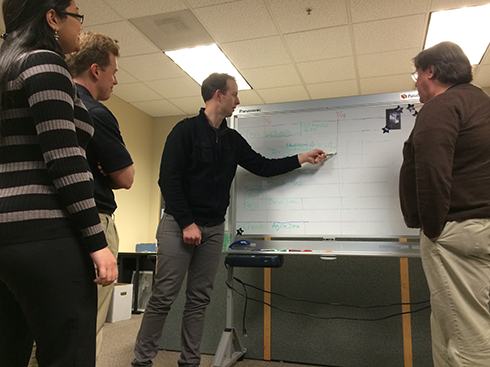MLS Insight: The RMLSweb Development Process
This post is part of MLS Insight, a series about governance issues at RMLS™.
The RMLSweb system that provides our subscribers with the tools they need to serve sellers and buyers is an in-house system. That means that RMLS™ employs development and programming staff, and does not have a vendor that controls the features available to our subscribers. We have been developing and refining the RMLSweb system in-house since 2001.
Using a custom in-house system has both great benefits and some challenges. We are able to improve our system based on the input of our subscribers about their wants and needs for both data about listings and system features. Early on, we determined that we needed a way to prioritize competing enhancement requests, and I wanted to describe that general process for you.
We collect all comments and suggestions we receive from our subscribers. They are reviewed monthly, because sometimes the requested functionality already exists and therefore presents a training opportunity. When a suggestion is made about new data to collect on our forms, it is delivered to the RMLS™ Forms Committee for their discussion and recommendation.
If a suggestion is small enough, and would benefit a majority of subscribers we may work on it right away. Bugs that are found are also worked on immediately. Each fall, enhancements requiring a significant amount of work are grouped generally into project buckets—mostly according to what part of the system is involved. Sometimes, as in last year’s brower/tablet compatibility project, all parts of the system are involved. Subscriber interest is gauged with a brief description of the potential projects in the annual Subscriber Satisfaction Survey. (Subscribers are also asked to rate the projects completed since the last survey.)
At the end of the year the RMLS™ staff prepares a more detailed report about potential projects for development in the coming year. Usually six to ten projects are proposed. Each project summary includes a description of the business need or opportunity, lists specific examples that come from the enhancements requested by subscribers, and estimates the project duration and resources needed. The Technology Committee reviews the report and adds their comments and a grade to the rating obtained in the Subscriber Satisfaction Survey.
The final step of the process is prioritization by the RMLS™ Board of Directors. This occurs during their annual retreat in February, when there is plenty of time to discuss and deliberate about the options. The three top priorities that the board directed our development team to work on this year are:
• Search and report improvements to allow easier ways to manage saved searches, prospects, and search results. Examples include improving the MLS#/Address Search on the desktop sidebar with a better parser and more prominent location; saved search integration with contact manager; the ability to hide the map in Advanced Search; search results modernization with a “detail” view mode like the one in Listing Load; and enhancing the search results with a map view.
• SentriLock API integration to allow single sign-on to manage some of the functions of the lockbox system, including assigning a lockbox to a listing, retrieving information about who has accessed your lockboxes, as well as properties you have viewed.
• RMLSweb usability to improve the appearance, behavior, and performance of RMLSweb on tablets. This would take the browser compatibility project one step further with features like geolocation awareness in map search on mobile devices.
If you are curious to see a history of software we have released, check out RMLSweb Deployment History in Forms and Documents on RMLSweb. To check on what is coming up, go to RMLS™ Future Enhancements.
Next month we will cover the RMLS™ service area. If you have any questions you would like to have answered about RMLS™ governance or operation, I encourage you to post a comment to this blog.
